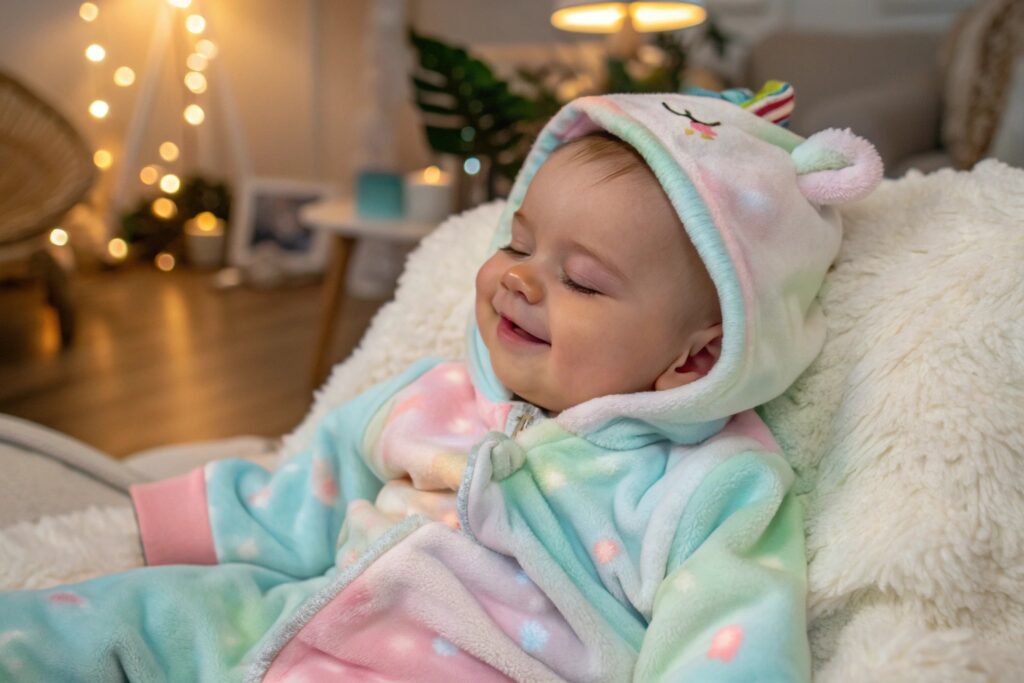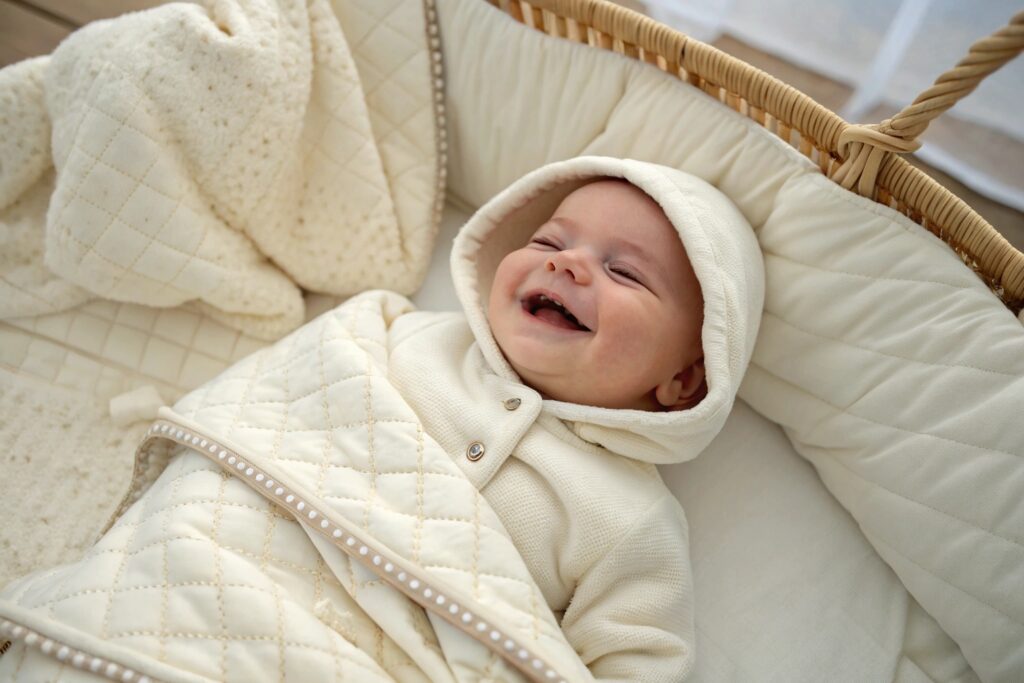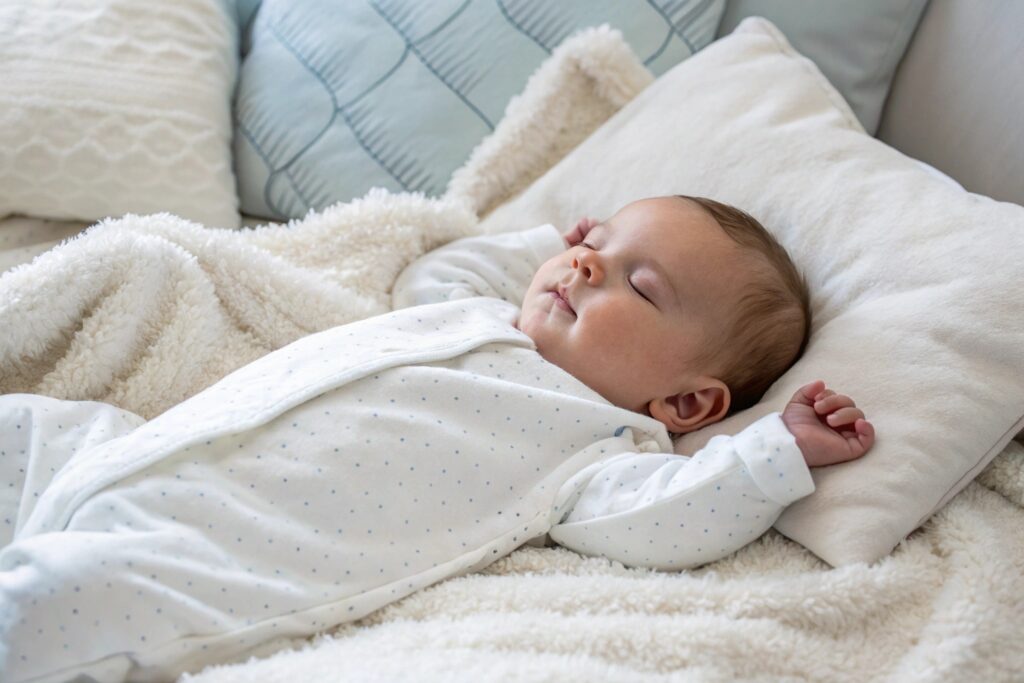Why Soft Colors and Minimal Designs Are Winning in
In the ever-evolving world of fashion, one segment is experiencing a noticeable shift: babywear. Soft colors and minimalist designs have taken over the spotlight, replacing the vibrant, busy patterns of the past. More and more parents are opting for baby clothes that focus on comfort, safety, and simplicity. This change isn’t just a fleeting trend but a reflection of the growing understanding of what makes babies comfortable and what appeals to modern parents.
Soft colors and simple designs aren’t just about aesthetics. These elements play a crucial role in creating a peaceful environment for babies, which can contribute to their overall well-being and development. The minimalist approach also reflects a desire to provide babies with clothing that is functional, versatile, and timeless.
As a babywear manufacturer with years of experience, I’ve seen firsthand how these preferences are shaping the market. In this article, we will explore why soft colors and minimalistic designs are becoming so popular, what makes them a smart choice for parents, and how these elements are influencing the future of baby fashion.
Why are colorful toys good for babies?
When we think of babies, we often picture toys in bright, primary colors. But have you ever wondered why these toys are so commonly used? The colors in toys aren’t just for decoration; they serve a critical role in a baby’s development. Colorful toys are more than just engaging—they help stimulate a baby’s brain, promote learning, and improve cognitive skills.
Bright colors in toys help babies explore their world and understand their environment. The colors stimulate their visual senses, and over time, babies begin to associate different colors with objects, emotions, and even actions.
But how does this concept apply to baby clothing? Can colors in babywear also have an impact on a baby’s development? Let’s explore further.

The Psychology of Color in Baby Development
Colorful toys do more than just captivate a baby’s attention. They contribute to the development of visual recognition and help babies distinguish between objects and surroundings. Research in child psychology suggests that color can also influence mood and emotional development. When babies interact with colorful objects, they learn to process the colors and associate them with different feelings.
For example, studies show that babies are attracted to bright colors like red, yellow, and blue during the early stages of development. These colors are easier for babies to recognize, and they tend to grab their attention quickly. Red and yellow are stimulating colors that evoke excitement, while blue and green are associated with calmness and peace. These reactions are linked to the brain’s visual processing, and the effect can be seen in toys and clothes alike.
When it comes to baby clothing, color choice plays an important role in creating the right atmosphere for babies. While bright colors may be stimulating, overuse of them can lead to overstimulation, which can disrupt a baby’s calm state. This is why parents are increasingly turning to soft colors like pastels, which offer a gentler visual experience.
How Color in Toys Affects Babies’ Emotional Development
As babies engage with colorful toys, their emotional development is also impacted. The right color can have a calming effect, while others may heighten their excitement. This emotional connection extends to baby clothing as well. For parents, choosing soft, soothing colors like soft blues, light pinks, and muted greens can help create a nurturing, peaceful environment for their baby.
Minimalistic designs with neutral and pastel colors offer a gentle visual experience. This is especially important for parents who want their baby to feel calm and comfortable. By dressing babies in clothes that reflect the soft hues they encounter in their environment, parents can promote a sense of peace and comfort for their little ones.
Why are colors important in fashion design?
Color is a crucial element in fashion design. From runway collections to everyday wear, designers use color to make a statement, convey emotions, and communicate cultural and social messages. Color can be bold, subtle, or even controversial, but its impact is undeniable. In the world of babywear, color plays a key role in shaping the way parents perceive baby clothing and influence their purchasing decisions.
In fashion design, color not only sets the tone for the entire collection but also influences how consumers perceive the garment. In babywear, the right color can evoke a sense of innocence, peace, and comfort—qualities that every parent desires for their child.

Colors as Emotional Influencers
In the realm of fashion, color is known for its psychological effects. In babywear, colors like pastel pink, light blue, and lavender have the ability to evoke feelings of calmness, comfort, and innocence. When parents choose baby clothes in these soft hues, they are subconsciously aiming to create a serene atmosphere for their child.
Designers understand that color can influence the mood and emotions of the wearer, and in the case of babywear, this is especially important. The clothing babies wear isn’t just for protection from the elements—it’s also part of their sensory experience. Soft colors have the power to soothe babies, while bright colors can excite them. That’s why many baby clothing lines now feature a range of calming shades, giving parents the ability to create a peaceful environment for their little ones.
The Shift to Minimalist Babywear
The minimalist design movement, which emphasizes simplicity and functionality, has had a profound effect on baby fashion. Minimalism is all about stripping away unnecessary elements, focusing on clean lines, and using neutral or soft colors to create a timeless, elegant look. This design philosophy has gained significant traction in the babywear market, as parents seek clothing that is both stylish and practical.
Minimalist baby clothing designs often feature simple shapes, soft fabrics, and subtle details that let the natural beauty of the garment shine. These clothes are not only visually pleasing but also versatile, easy to pair with other items, and timeless. By avoiding excessive embellishments, minimalist babywear ensures that the baby’s comfort and well-being are always the top priority.
What’s the most important thing when buying baby clothes?
When it comes to buying baby clothes, comfort, safety, and functionality are the top priorities for parents. Babies have delicate, sensitive skin, so the fabric and construction of their clothing are essential. However, there are other factors that influence a parent’s decision-making process, such as ease of use, durability, and even environmental considerations.
The most important factor when purchasing baby clothes is ensuring that the fabric is soft, gentle, and comfortable against the baby’s skin. Fabrics that are breathable, hypoallergenic, and made from natural fibers are ideal choices for newborns and infants.

Comfort Above All Else
Babies’ skin is delicate and sensitive, which is why the fabric used in their clothing must be soft, breathable, and non-irritating. Natural fibers like cotton, bamboo, and organic blends are often preferred because they are gentle on the skin and allow for proper air circulation. These fabrics keep babies cool in the summer and warm in the winter, ensuring their comfort throughout the day.
One of the challenges of buying baby clothes is ensuring they are easy to put on and take off. Parents don’t have time to struggle with complicated fastenings or intricate designs. This is why simple, practical designs that can be easily slipped on or off are preferred. Clothes with soft, stretchy fabrics or snap closures make dressing babies a breeze and minimize stress for both parents and babies.
Durability and Easy Care
Baby clothes take a lot of wear and tear. Spills, accidents, and messes are common, so it’s important that baby clothing is durable and easy to care for. Fabrics that hold up well to frequent washing without losing softness or shape are essential. Parents want clothes that can withstand multiple washes and still look great, which is why durable fabrics like cotton are often a top choice.
In addition to durability, easy care is another consideration. Parents are looking for clothes that are easy to wash and maintain. Clothes that don’t require special care instructions or expensive dry cleaning are ideal for busy families. Cotton and bamboo fabrics are not only soft but also easy to wash, making them the go-to choices for many parents.
What is the softest fabric for baby clothes?
When it comes to baby clothing, the softest fabrics are those that feel gentle on the baby’s skin while still offering the necessary protection from the environment. Cotton is one of the most popular choices due to its softness, breathability, and hypoallergenic properties. However, other fabrics, such as bamboo and organic cotton, are also gaining popularity due to their exceptional softness and eco-friendly characteristics.
The softest fabrics for baby clothes are those that offer both comfort and breathability. Cotton, bamboo, and organic fabrics are all excellent choices for baby clothes, as they provide the necessary softness without compromising on quality or durability.

The Benefits of Cotton for Baby Clothes
Cotton is the go-to fabric for baby clothes because of its soft texture, breathability, and hypoallergenic properties. Babies’ sensitive skin is prone to irritation, and cotton helps to minimize this risk by offering a smooth, soft surface. Cotton also has the ability to wick moisture away from the skin, keeping babies dry and comfortable throughout the day.
In addition to being soft and breathable, cotton is versatile and can be used in a variety of baby clothing items, including onesies, sleepwear, hats, and blankets. It is also an easy fabric to care for, making it a favorite among parents.
Bamboo Fabric: The New Softness Standard
Bamboo fabric is gaining popularity as one of the softest and most eco-friendly options for baby clothing. Bamboo fibers are naturally smooth and round, making them less likely to cause irritation or discomfort. Bamboo fabric is also incredibly breathable and moisture-wicking, keeping babies cool and dry in warm weather.
Beyond its softness, bamboo fabric is also naturally antibacterial, which helps prevent odors and keeps baby clothes fresh. It’s a sustainable choice that’s both gentle on the environment and the baby’s skin. Bamboo baby clothing is an ideal option for parents who want to provide the best for their little ones while also considering their environmental footprint.
Conclusion
The growing popularity of soft colors and minimalistic designs in babywear reflects a broader movement toward simplicity, comfort, and functionality. Parents are increasingly opting for clothing that not only looks stylish but also promotes their babies’ well-being. By focusing on soft colors, gentle fabrics, and versatile designs, babywear is evolving into a category that prioritizes both aesthetics and practicality. This trend is here to stay, offering parents a timeless and peaceful way to dress their babies.










